Insights of a Gravel Racer
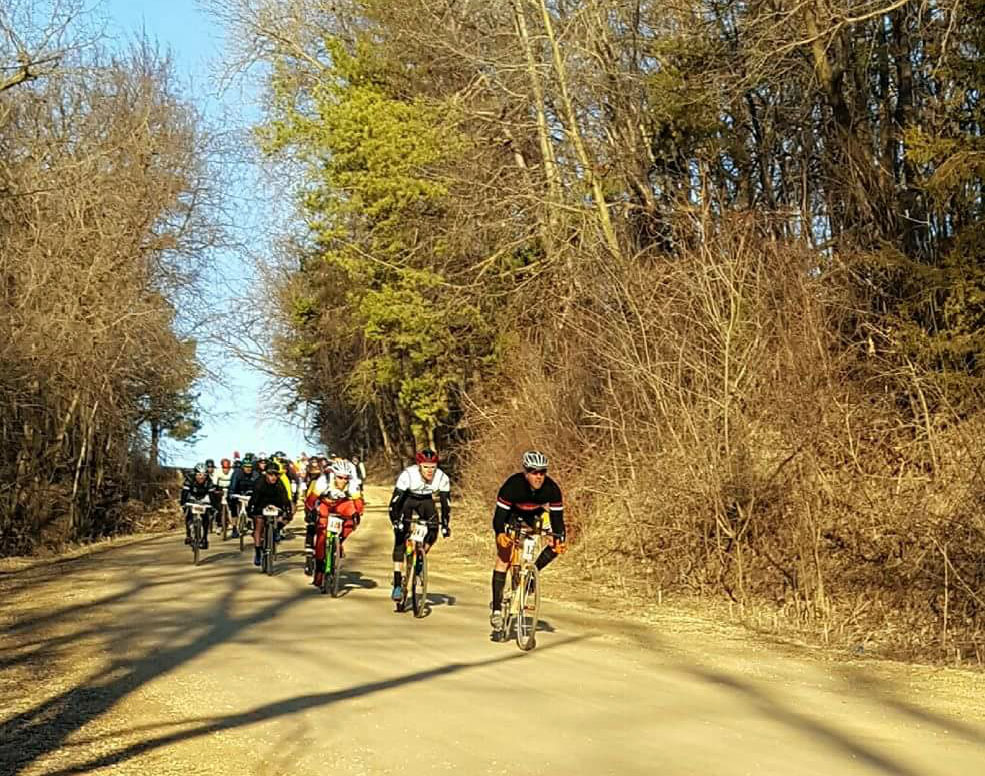
Drew Wilson won the Ragnarok 105-mile gravel race on Compass tires recently, so we used the opportunity to ask him about his race and gravel riding in general.
JH: Congratulations on your win at the Ragnarok 105. It’s a tough event – tell us a bit about it.
DW: The Ragnarok is a traditional midwest gravel race, now in its tenth year. It is free with postcard entry and is self-supported. Many in the region consider it an essential part of spring. The course is 107 miles, with around 8000 feet of vertical ascent across 14 climbs. The road surface is roughly 85% gravel, 10% minimum maintenance ‘gravel’ and 5% paved. The largest climbs are back to back, at about mile 55. “Heath’s Hill” at mile 87 is an ATV/Snowmobile trail that takes about 9 minutes and often decides the outcome of the race. In some years, it has been completely covered in unrideable snow. It’s the hardest ~100 mile gravel race I’ve done, and it always feels like an accomplishment to finish.
JH: How did the race go for you this year?
DW: My plan was just to stay upright and to react to the chaos during the first part of the race, until we got over the steepest of the hills, where I would be at a relative disadvantage. Then I’d look for a way to go solo. The finishing climb is steep and does not suit me well, so I hoped to find a way to get to it alone.
I was dropped at mile 15 by a huge group of riders, but caught back on 4 miles later by descending fast. Had to decide at mile 24 whether or not to go with a solo attack and again at mile 30 when another rider went to bridge up… I decided ‘No’ on both. Got nervous about the gap they were creating at mile 45 or so and attacked, only to pull my foot out of my pedal and drop my chain, which forced me to tuck tail and regain the chase group. As expected, I was dropped from the chase group of eight riders on the large hills at mile 55, then overcooked a corner into a ditch while chasing on the descent. Caught back on when there was a bit of a lull.
Around mile 68-70, I tried to rally the group to go after the solo leader (one of the pair up front had flatted out) and found the group didn’t have much interest in chasing. So I snuck off the front and chased solo. I know now that we were 8 minutes behind, but we had no idea at the time. Caught the solo leader with 6 miles to go, went by and held a 2-minute gap to the line. Got to high-five my four-year-old daughter as she ran beside me on the final climb!
JH: That was a truly eventful race! How did you get into gravel racing?
DW: I decided in August of 2008 to get into bike racing, and I tried some mountain biking. The following spring, I saw an article in the local paper about the Almanzo 100 and an interview with founder Chris Skogen. The race was only two weeks out at that point, and I had never ridden 100 miles. I sent Chris an email that basically said: ‘Hey, I think I can ride 100 miles. Can I get in?’ I rode the Almanzo that year in 8:04 hours on a 1996 Marin Pine Mountain I had equiped with drop bars and 26′ x 1.5′ slicks. The wind blew about 30 mph all day. It was the hardest thing I had ever done, and I was hooked!
JH: In your experience, how is racing on gravel different from road racing?
DW: Gravel races have time to breathe. Morality, friendship, betrayal and vengeance all have room to grow. Road races around here are not hard enough for that same development. You watch the pros in the classics and world championships, or a break-away near the end of a grand tour stage, when they race each other… that’s the dream. The opportunity to have those emotions in our racing. Individual riders pushed to the limit by each other and the course. Even when the larger road teams show up, by the end of 3 or 4 hours on gravel, they’ve lost control. On the road, there is much more control.
At the same time, gravel is about participation and camaraderie, too. No categories. Riders who wouldn’t be comfortable ever racing on the road are welcomed. Riders from different disciplines, walks of life, etc., ride together for hours. It’s very inclusive and approachable. The magic is that everyone can find something in it, regardless of where they come from, what they ride, or what their goals are.
JH: Any tips for riding on gravel?
DW: I live on a gravel road. Every ride I go on is a ‘gravel ride’. Don’t be afraid to ride any bike you own on gravel. Just go!
From a skills perspective? Stay loose, don’t try to force the bike. Always look for the best line. If you have to ride in the grass on the edge of the road, ride in the grass. If you have to cross the road to find firm ground, cross the road. Don’t get down about your average speed if you are used to riding on the road, just let it happen. Gravel will find you.
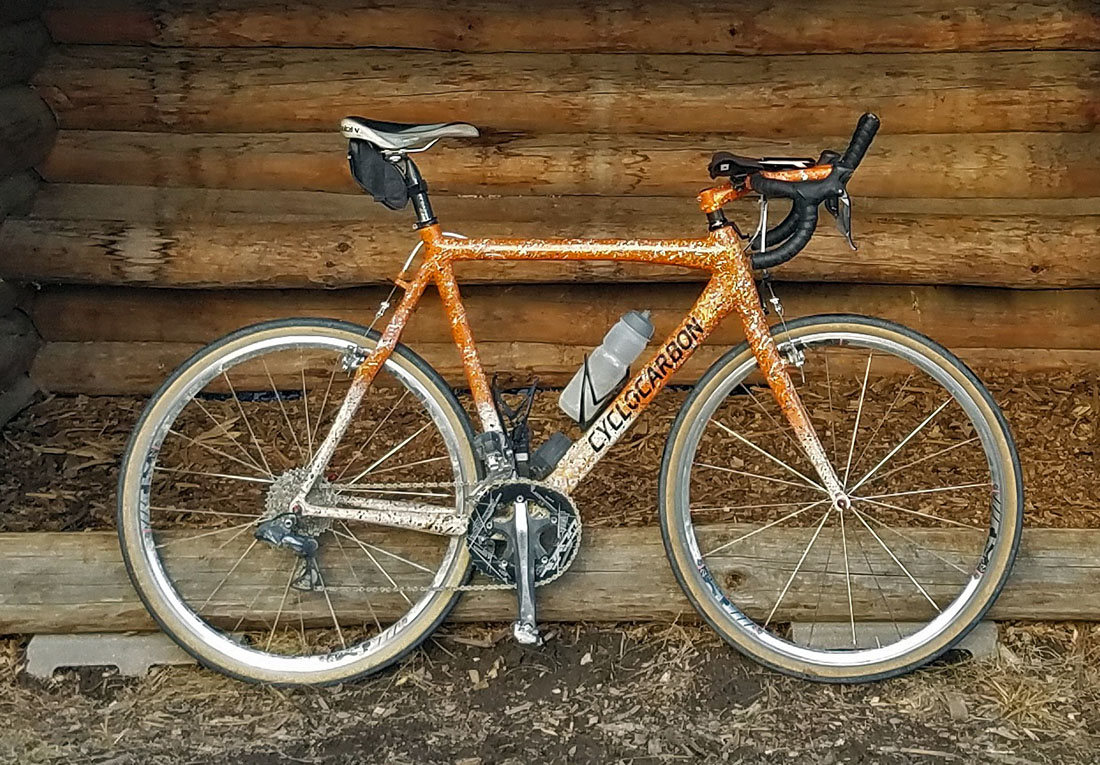
JH: There are many opinions on what makes a perfect gravel bike. Tell us about yours!
DW: This is my 5th season on the same bike with fairly minimal changes. I’ve ridden countless other gravel and cyclocross bikes over the years, but haven’t found anything I liked better for gravel racing. The frame is a 56cm 2010 Tommaso Diavolo. I purchased the frameset really cheaply with minor damage to the stays. Later, I broke it clean through the downtube at CX Nationals in Madison, and I repaired that. It has about 11 or 12000 miles on it now, after the repairs. I replaced the fork with a carbon Trek that is 5 mm longer than stock, but with the same offset. This was primarily because the stock fork was miserably flexy and likely dangerous. There is nothing particularly special or high-quality about the frame itself, it just happens to fit my needs. It is relatively light and has canti bosses, which also help to save weight. I run 10-speed Shimano Ultegra electronic, a Dura-Ace 7900 crankset with a powermeter, Paul cantis, Industry Nine I25 wheels and Compass tires. Everything is pretty standard, with an eye toward durability. The one notable deviation would be my custom aerobars, constructed from Bontrager XXX Lite aero extensions and XXX Lite 44cm traditional drop bars.
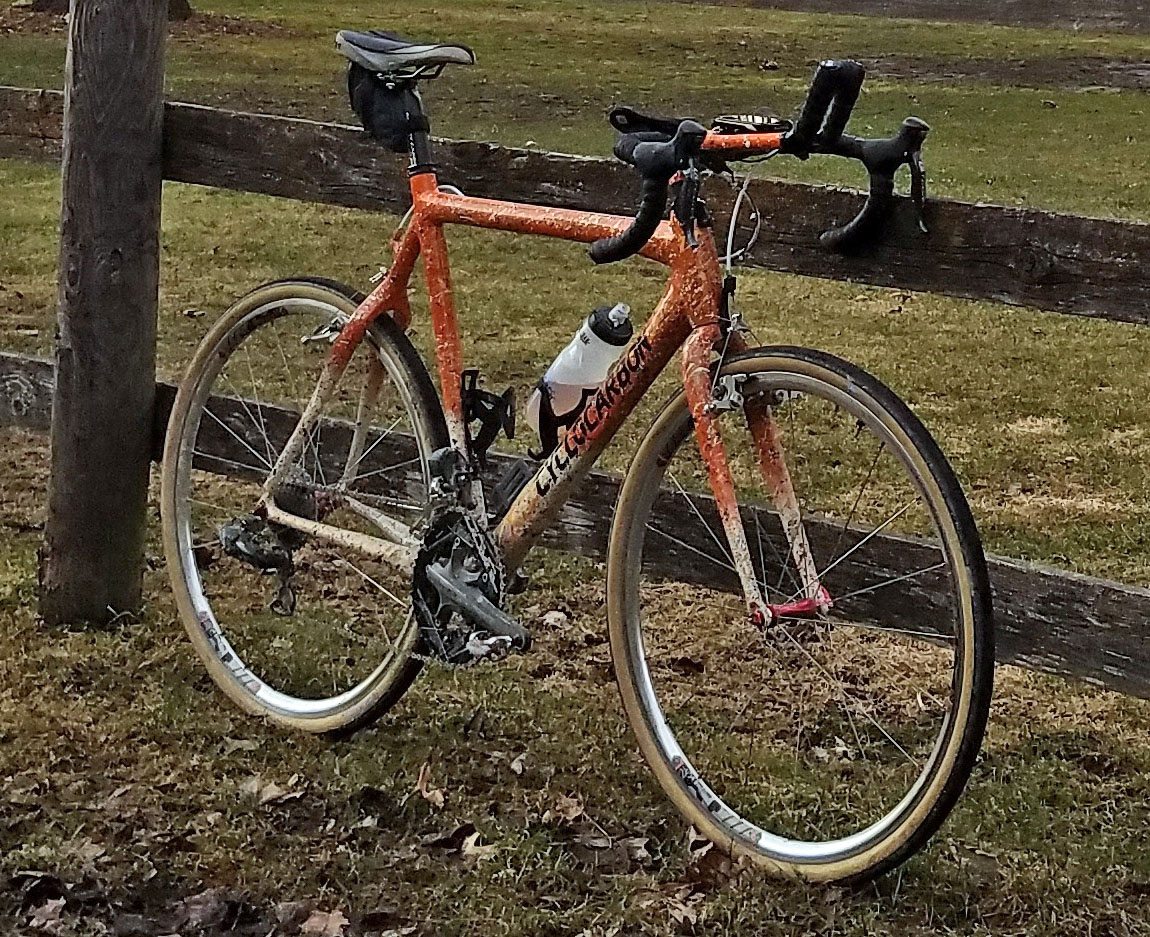
JH: There aren’t many gravel racers using aerobars…
DW: There are several advantages to aerobars. Mine are a little different from a traditional clip-on bar, though. My extensions actually go right through the main portion of the bars, and everything is integrated together for stiffness and fit. Having the extensions down as low as possible, and the pads sitting low on the tops of the bars allows me to have a very aero position when in the aerobars, but a comfortable all-day position on the hoods. I run a relatively deep drop road bar for much the same reason. Aerobars allow me to drastically change positions and recruit different muscles in pedaling. It’s amazing how much better it feels sometimes to drastically vary my position, and even my cadence. They also allow me to take weight off my hands on longer rides. Of course, they are also more aerodynamic.
JH: That must have helped when you were off the front! Which tires did you run?
DW: I was on Compass Bon Jon Pass 35s, set up tubeless with 1.5 oz of Orange Seal Endurance sealant, on Industry Nine I25 wheels.
JH: You wrote on Instagram that the second finisher also was on Compass tires?
DW: Yes, he was on the same tires. Over the last year or so, in our bigger gravel events (Ragnarok, Almanzo, Filthy 50 etc.), a large portion of the podiums have been on Compass tires. People who could ride other tires they can get at a team discount have been choosing instead to buy Compass tires.
JH: What do you like about Compass tires for gravel racing?
DW: Rolling resistance is the primary factor. Along with that they have amazing ride quality and traction. They are the lightest, fastest, most supple tires available in these wider sizes. Suppleness is really the key. A supple tire conforms to the road, which creates both traction and speed. At first, it was a little weird not having knobs. We’ve all been indoctrinated that knobs are needed for traction. Of course, that isn’t true.
I had previously been racing FMB tubulars on Dura-Ace carbon tubular wheels. Not only are the Compass tires significantly faster, there is zero drop off in handling and my I9 wheels/tubeless Bon Jon pass setup is nearly the same weight too. My front wheel/tire only weighs 1090 g as raced.
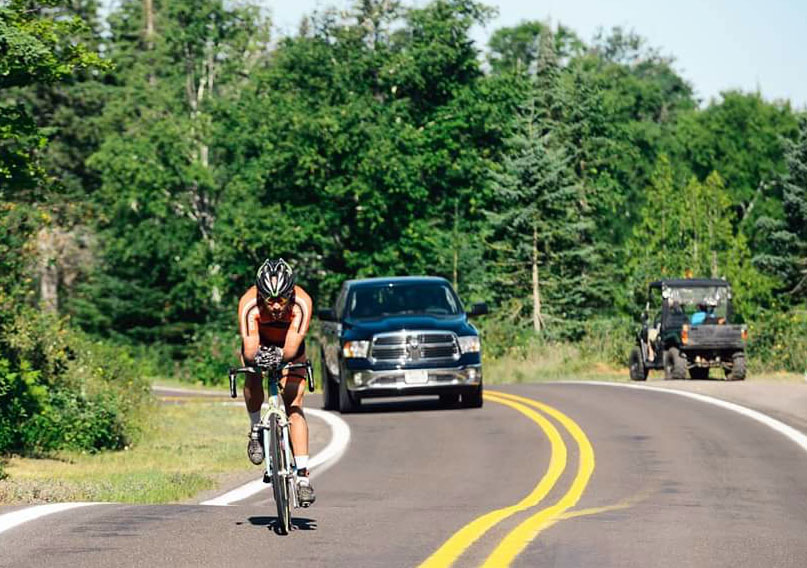
JH: You told me a neat story how you discovered Compass tires…
DW: I had been racing on tubulars. For longer rides and touring, I had been using very heavy/slow ‘touring’ tires. I had a ride planned from Stewartville, MN to Copper Harbor, MI, which I wanted to do as rapidly as possible. There was a gap in my season, and I wanted to challenge myself with the pace/distance. I had been following along with Bicycle Quarterly a little and knew of the Compass tires. The Stampede Pass seemed like it might work for the mixed surface route, and I thought I’d be able to fit them on my 1990 Focus road bike, which I planned to ride. They did fit with a little modification to the rear brake. I had a great trip. Finished the 507 miles (810 km) in just under 50 hours including a good night of sleep at a hotel. I’ve been using Compass tires for a wide range of situations ever since.
On another trip, I was talked into riding the bike leg of a team triathlon (above). I only had my touring bike with the Stampede Pass tires on it. I shocked myself by averaging 25.1 mph (40.4 km/h), nearly as fast as I could ride a ‘proper’ TT bike.
JH: Do you run the tires tubeless?
DW: Yes. I am currently. However, I’ve put about 5000 miles on the Barlow Pass and Stampede Pass tires over the last couple years with tubes. Tubeless is great. But I’ll take a great tire with a tube over a good tubeless tire any day. I generally run tubes when touring rather than racing.
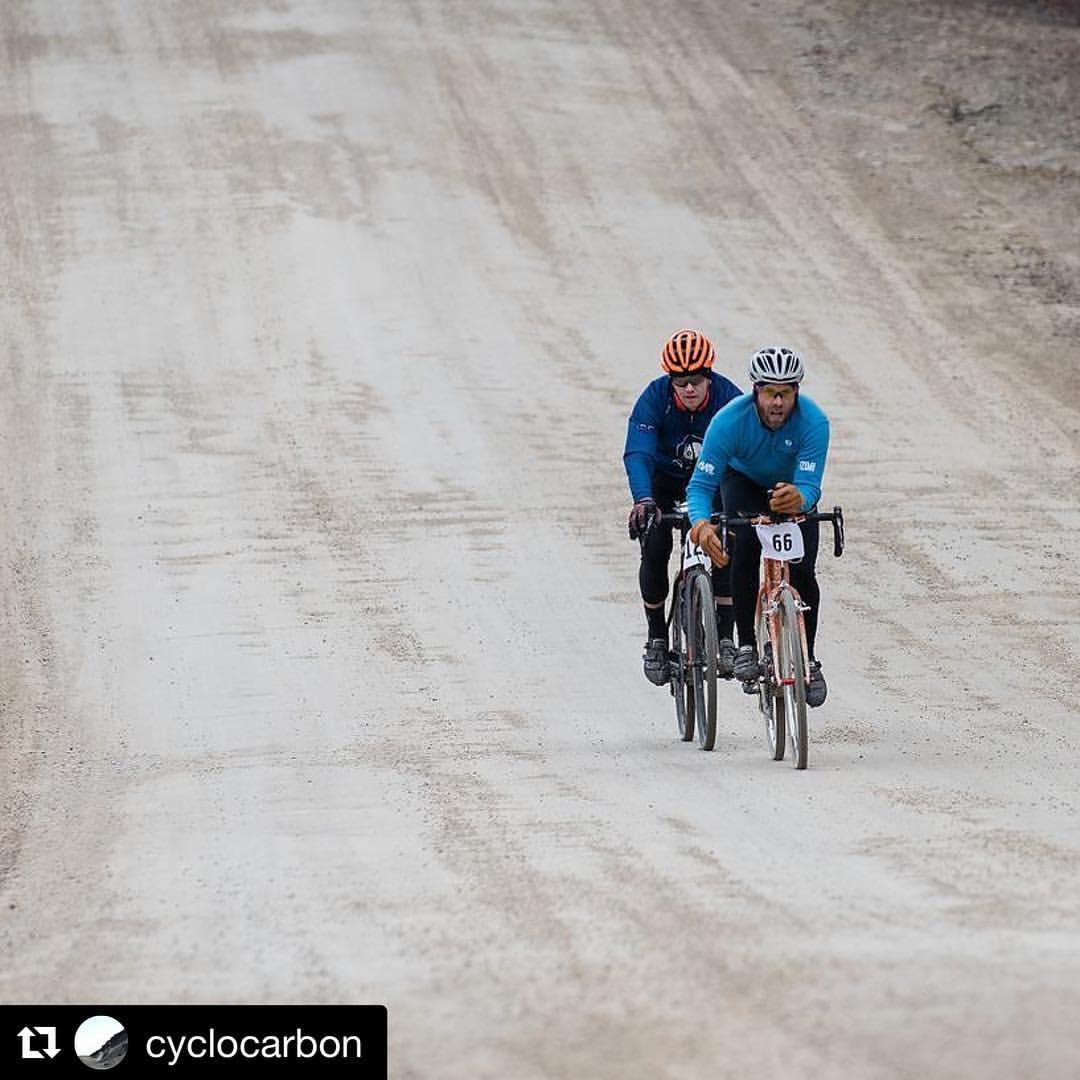
JH: What is your experience with tubeless tires?
DW: Two weeks ago at Lakeville-Milltown-Lakeville, I hit a pothole very hard early in the race. The pack was still over 100 riders large, and I had zero warning. I lost a bottle, and my saddle turned about 30 degrees to the side from the impact. I’m convinced I would have flatted, possibly double-flatted, with tubes. I was able to straighten my saddle and continue to finish second in the race. Tubeless saves a little weight, maybe a little rolling resistance, but, more importantly, it saves pinch flats.
JH: Tell us about your business! You repair carbon frames and paint bikes…
DW: I repair 3-8 frames a week and recently have been painting 2 or 3. I have a background in composite work from long before I started riding. When I broke my personal Look 585 in 2011, I decided to fix it myself. Roughly 700 frames later, I’ve been doing this full-time since quitting my day job early in 2015, and I couldn’t be happier. The best way to follow along is via https://www.facebook.com/cyclocarbon
JH: I heard you are putting on a gravel race yourself. Tell us about it – I am sure some of our readers will want to ride it.
DW: The Dickie Scramble is coming up on the 22nd of this month in Elgin, MN. The Dickie is a challenging 84 mile route with roughly 75% gravel, 15% pavement and the remainder minimum maintenance road or ATV/Snowmobile trail. The route meanders through river valleys in the bluff country near Whitewater State Park and is punctuated by four very long climbs. We do a potluck style checkpoint, where riders can drop off food at the start and choose from a large spread as they roll through. Registration is open until the day of the event, and more information is available here.
I also organize a fall ride/race out of Lanesboro, MN called the Tour of Fillmore. I have not yet set a date for this year’s event. The Tour of Fillmore course is the hardest 77 miles you’ll find in Minnesota, but the views and descents are worth the effort. What really sets it apart is the high percentage of winding single-lane climbs and descents.
And anyone reading this from the midwest should also certainly make the trip to one of the Almanzo events in May.
JH: Thank you, Drew, and good luck with the upcoming races!


